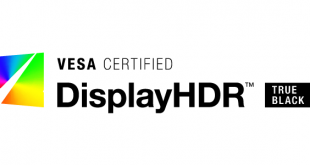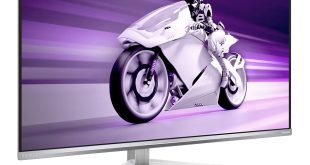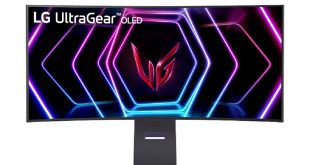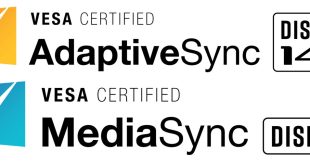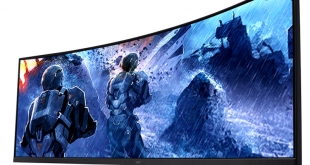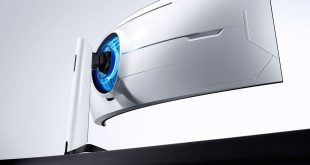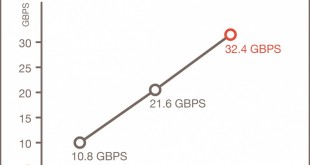VESA, the Video Electronics Standards Association, is introducing new quality standards to represent display motion clarity and HDR experiences better. The organisation has announced revisions to its ClearMR and DisplayHDR True Black standards, introducing new performance tiers to cater to the latest advancements in display technology. These updates will be …
Read More »Evnia joins the 4K/240Hz QD-OLED bandwagon with the 32M2N8800
Philips has unveiled its latest gaming monitor under the Evnia brand, the 32M2N8800. We first got a look at this screen at Philips' press event in April, but it is now ready to hit the market. The Philips Evnia 32M2N8800 packs a QD-OLED panel with 4K resolution, a claimed 0.03 …
Read More »VESA DisplayHDR 1.2 aims to improve HDR for entry-level displays
Roland Wooster, an engineer at Intel who also heads the VESA Display Performance Metrics group, characterised the latest version of VESA DisplayHDR as a “tightening” of the specification while broadening the scope and criteria of the testing. The idea is to enhance the visual quality of the monitors you purchase, but one of …
Read More »VESA updates Adaptive-Sync standard for emerging gaming monitors with Dual-Mode
VESA has recently announced an update to its Adaptive-Sync Display compliance test specification (CTS). The latest version, Adaptive-Sync Display v1.1a, includes new testing processes and a logo for new “Dual-Mode” gaming monitors, which offer multiple native refresh rates. With this optional “Dual Mode” testing and logo, display OEMs with eligible …
Read More »ECS Liva One H610 Review – Impressively compact
It's a tiny barebones PC from ECS - but what does Leo makes of it?
Read More »VESA introduces AdaptiveSync and MediaSync VRR standards for monitors
VESA, the Video Electronics Standards Association, has publicly announced the first open standards for variable refresh rate displays. There will be two standards, AdaptiveSync and MediaSync, which will help users make an informed choice when buying their next display. To be eligible for these certifications, displays will have to abide …
Read More »VESA announces DisplayHDR True Black 600 specification
While DisplayHDR 2000 may not exist, VESA has been working on bringing other HDR standards to the PC market. Today, VESA launched the DisplayHDR True Black 600 specification and standard, with ASUS being the first laptop maker to adopt it with new OLED display models. The new DisplayHDR True Black …
Read More »VESA confirms DisplayHDR 2000 doesn’t exist
Over the last couple of weeks, we've seen two monitors listed at Chinese retail sites advertised with a ‘DisplayHDR 2000' logo. At the time, it was assumed that a higher tier was being added to the VESA HDR certification programme, but as it turns out, the logo is fake. In …
Read More »Acer planning a 49-inch Mini LED monitor to rival Samsung Odyssey G9
It looks like the Samsung Odyssey G9 already has some competition. A new curved gaming monitor from Acer has been listed at a Chinese retailer, and as per the product description, it will have specs to match Samsung's improved Odyssey G9 display. According to a Taobao listing (via TFT Central), the …
Read More »Next-gen Samsung Odyssey G9 could be the first DisplayHDR 2000 gaming monitor
There has been a huge rise in the number of HDR-capable gaming monitors over the last couple of years. Up to this point, the highest-ranking HDR monitors support VESA's DisplayHDR 1000 standard, but soon, we may see the first DisplayHDR 2000 monitor, with Samsung leading the pack. According to a …
Read More »VESA releases updated DisplayPort “Alt Mode”
Video Electronics Standards Association – or VESA for short – has announced the specifications of DisplayPort Alt Mode 2.0, that enables all the latest capabilities of DisplayPort through a USB Type-C connector, including “beyond-8K resolution and higher refresh rates, along with USB data delivery”. On April 29 VESA announced that it has released …
Read More »VESA launches new 8KDP cable spec with High Bit Rate 3 support
Ultra-HD and 4K displays are finally starting to come to the forefront for PC gamers but 8K seems to be just around the corner. This week, VESA published its new DP8K cable specification, with support for DisplayPort High Bit Rate 3. HBR3 is the highest bit rate supported by DisplayPort …
Read More »VESA develops certification system to help define HDR quality
Narrowing the choice of displays has always been a difficult process, with customers having to factor in resolution, refresh rate, size for its relative pixel-per-inch and many other nitty gritty details that lead to the optimal experience. To lighten the load, VESA has attempted to give a clearer definition of …
Read More »First commercial 8K ultra-HD displays may hit the market in 2018
Tens of millions of 4K ultra-high-definition televisions have already been sold to consumers even despite of the fact that UHD content is rare and mainstream TV channels will not support ultra HD resolutions any time soon. The same thing is going happen to the successor of 4K UHD TV-sets, 8K …
Read More »VESA’s new eDP 1.4a standard enables 8K UHD embedded displays
The Video Electronics Standards Association (VESA) on Monday published the Embedded DisplayPort (eDP) standard version 1.4a. The new standard allows to build ultra-high-definition panels for embedded applications with up to 8K*4K (7680*4320) resolutions. The new eDP 1.4a standard also supports AdaptiveSync technology. The eDP v1.4a standard leverages the VESA DisplayPort …
Read More »VESA unveils DisplayPort 1.3 spec, adds support for 8K resolution, 4K at 120Hz
The Video Electronics Standards Association (VESA) on Monday released the DisplayPort 1.3 standard. The new audio/video specification increases maximum link bandwidth to 32.4Gb/s, with each of four lanes running at a link rate of 8.1Gb/s/lane. The new standard will support new resolutions and modes, which enables to connect various sources …
Read More »VESA adds Adaptive Sync technology to DisplayPort standard
The Video Electronics Standards Association (VESA) on Monday announced that the future implementations of the DisplayPort 1.2a standards will feature Adaptive Sync technology that is supposed to synchronize refresh rates of displays with actual frame-rate that is displayed. The feature will make games and video run much smoother than currently. …
Read More »Antec ISK 110 VESA Case Review
Today we are going to look at the Antec ISK 110 VESA which is a small form factor PC case that can be attached to the back of your monitor to save space. It's designed to be as compact as possible, only supporting the smallest components. This makes it ideal …
Read More » KitGuru KitGuru.net – Tech News | Hardware News | Hardware Reviews | IOS | Mobile | Gaming | Graphics Cards
KitGuru KitGuru.net – Tech News | Hardware News | Hardware Reviews | IOS | Mobile | Gaming | Graphics Cards


